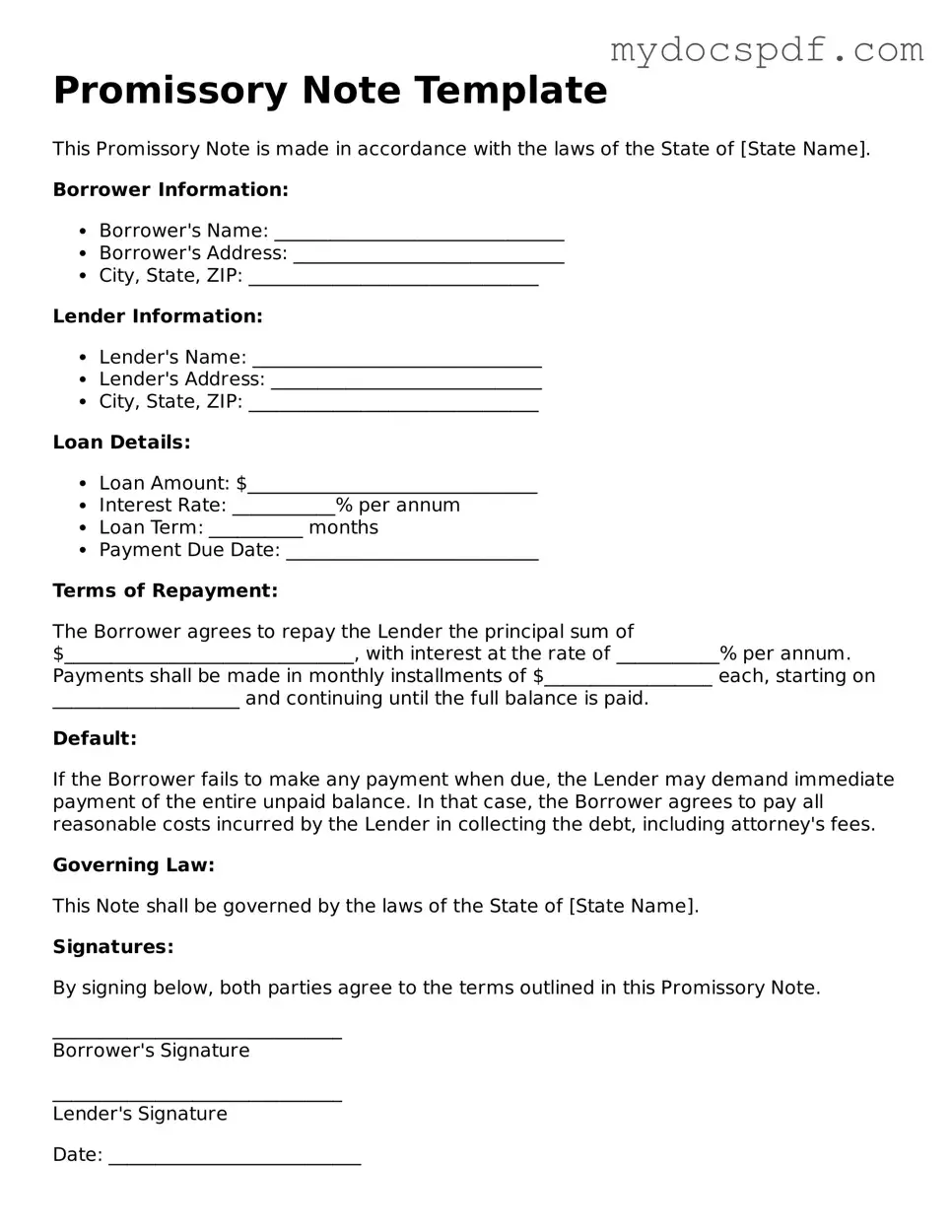Promissory Note Template
This Promissory Note is made in accordance with the laws of the State of [State Name].
Borrower Information:
- Borrower's Name: _______________________________
- Borrower's Address: _____________________________
- City, State, ZIP: _______________________________
Lender Information:
- Lender's Name: _______________________________
- Lender's Address: _____________________________
- City, State, ZIP: _______________________________
Loan Details:
- Loan Amount: $_______________________________
- Interest Rate: ___________% per annum
- Loan Term: __________ months
- Payment Due Date: ___________________________
Terms of Repayment:
The Borrower agrees to repay the Lender the principal sum of $_______________________________, with interest at the rate of ___________% per annum. Payments shall be made in monthly installments of $__________________ each, starting on ____________________ and continuing until the full balance is paid.
Default:
If the Borrower fails to make any payment when due, the Lender may demand immediate payment of the entire unpaid balance. In that case, the Borrower agrees to pay all reasonable costs incurred by the Lender in collecting the debt, including attorney's fees.
Governing Law:
This Note shall be governed by the laws of the State of [State Name].
Signatures:
By signing below, both parties agree to the terms outlined in this Promissory Note.
_______________________________
Borrower's Signature
_______________________________
Lender's Signature
Date: ___________________________
